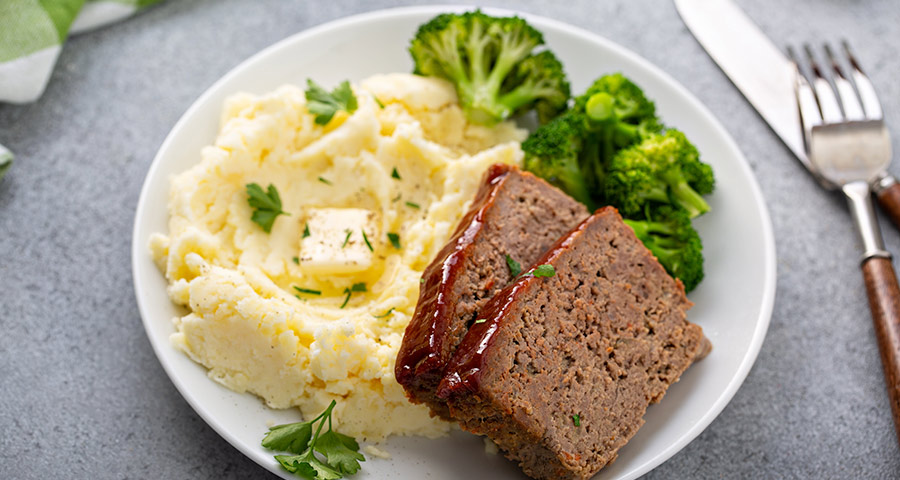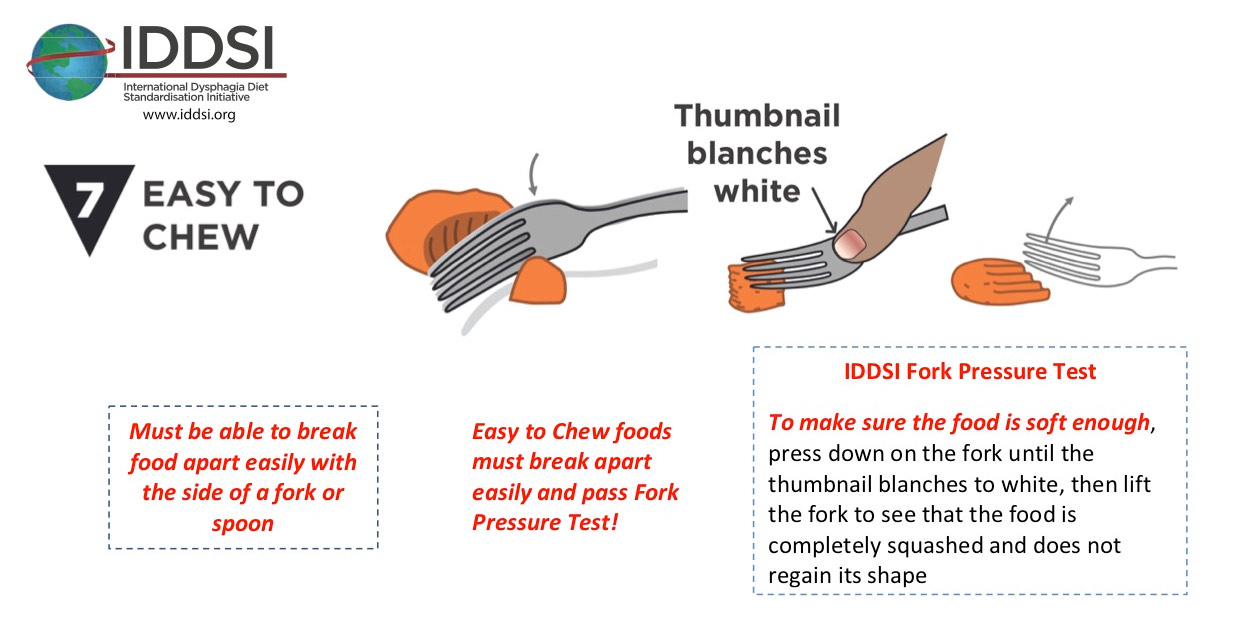
IDDSI Exploration Series, Part 2: A Dive into Updated Food Lists & Level 7 Easy to Chew (EC7)
Last week we began this series with a moment to examine the direction and momentum of IDDSI acceptance in the five years since the framework’s initial publication. In that time, professionals in healthcare, food service, clinicians, and researchers have sought to test, evaluate, and report back on the theory and design of the original framework. The sum of these efforts has helped generate a pool of evidence to drive expansion of framework documents and revisions where appropriate. This week, we are going to explore the latest chapter of these revisions in the updated food lists, and how best to utilize these resources. Anyone starting their research in to IDDSI may be tempted to seek out the food lists as their definitive blueprint for what is allowed, and what is not, but why that may not be the best approach is what we’ll cover today. We will also touch on the newest published texture Level 7 Easy to Chew (EC7), as an introduction to next week’s topic featuring testing methods.
What the Food Lists Are (and What They’re Not)
The food lists published by IDDSI provide direction for the selection and classification of appropriate foods for each of the texture levels. These free printable guides are available under “Consumer Handouts” in the Resources tab on the website. The current lists were revised and updated in January 2019, with each including a detailed description of the level, who might be appropriate for the texture, and specific food examples to help plan meals and snacks. Though the lists are helpful in creating a foundation for understanding the criteria of each level, they are not exhaustive indices of exactly what to include/what to avoid. Viewing them as an educational tool – versus a comprehensive reference – can be especially useful in helping people learn to assess the category/characteristics of foods accessible to them, and to accommodate for regional food availability, cultural preferences, and combination foods that may otherwise be difficult to outline in a global reference list.
The inherent challenge of reference food lists is to provide enough detail to be useful, while remaining concise (many of the IDDSI consumer handouts are 1-2 pages in length)1. The authors of the IDDSI documents achieve this by providing the inclusive criteria for foods, then augmenting that criteria with specific examples where necessary for support and clarity. For example, the IDDSI lists as written call out specific inappropriate foods in the “Food to Avoid” lists, but otherwise suggest foods more generally by food group or textural characteristic (e.g. tough, sticky, sharp, etc.) One approach to apply these lists effectively may include using the “Food to Avoid” lists as a starting point for understanding the restrictions of the level, then thoroughly studying the criteria and rationale for foods to include and who the texture level is intended to help. It is important to note however even with this basis of understanding, it is ultimately the testing of the food item or recipe which determines whether it is appropriate to include or not (more on that next week!).
You Asked, They Listened
In October 2018, IDDSI officially announced the expansion of Level 7 Regular (RG7) to include a sub-level called Easy to Chew. The decision was made in response to the findings from a June 2018 survey put out by the IDDSI committee, to which they received over 2000 responses2. The call was to create a label for soft foods without particle-size restriction, intended for individuals who may not necessarily have dysphagia but who could benefit from foods which require less effort to eat Click here to read the original EC7 announcement3. Similar to a Mechanical Soft or Dental Soft Diet, the EC7 texture features normal, everyday foods which are naturally soft (think cooked fish, canned fruit, pudding, well-cooked pasta in sauce), or those which are made soft through cooking method (e.g. braising, stewing), moistening, or physically manipulating the texture. Unlike the dual-criteria requirements of Level 6 Soft and Bite Sized (SB6; 1.5 cm x 1.5 cm adults), or Level 5 Minced and Moist (MM5; 4 mm for adults), foods in the EC7 sub-category can be larger than the restrictions for MM5 or SB6 if they meet the softness criteria. The measure of “softness” is not left to subjective opinion – repeatable testing methods are provided to help gauge softness and appropriateness of food samples.
Tests for the EC7 level include being able to be break food apart with the side of a fork or spoon and passing the IDDSI Fork Pressure Test (see: Figure 1 below for an example of EC7 testing methods, and the EC7 audit sheet). Use of the EC7 level can be especially helpful in circumstances where an individual is not at risk of choking, but may benefit from receiving recognizable food which reduces eating effort and encourages intake.

Figure 1. Level 7 Easy to Chew Testing Methods. (c) The International Dysphagia Diet Standardisation Initiative 2016 @https://iddsi.org/framework. Used under CreativeCommons Attribution Sharealike 4.0 License - https://creativecommons.org/licenses/by-sa/4.0/legalcode
No matter where in the continuum of IDDSI adoption you find yourself, we hope this week’s article has highlighted some ideas for how to apply the updated food lists in practice, and the thoroughness of the IDDSI committee and international contributors who developed this framework. Next up, we’ll review testing methods available for the different levels, when they need to be done, and tools you’ll need (Hint: it is easier than you think!). See you next week!
About the Author
 April is a registered dietitian with experience in menu design, clinical research, acute care, and integrative education. She received her Master of Science degree in Human Nutrition from the University of Minnesota Graduate School, after working four years in clinical research studying the health effects of green tea catechins in postmenopausal women. She completed her dietetic internship with The Emily Program in Minneapolis/St.Paul, before gaining a clinical foundation in the Medical/Surgical and Renal units as a clinical dietitian. Prior to joining MealSuite®, April worked in the nonprofit sector with older adults teaching nutrition classes, outpatient counseling, and developed a cooking curriculum for hands-on immersive adult education. Her current role at MealSuite® provides an opportunity to bring flavor, excitement and variety to therapeutic and texture-modified recipes and menus, to help keep mealtime inviting while staying familiar, for patients and clients. A Minnesota native, she now enjoys exploring the Texas scene with her husband and dog outside of Dallas.
April is a registered dietitian with experience in menu design, clinical research, acute care, and integrative education. She received her Master of Science degree in Human Nutrition from the University of Minnesota Graduate School, after working four years in clinical research studying the health effects of green tea catechins in postmenopausal women. She completed her dietetic internship with The Emily Program in Minneapolis/St.Paul, before gaining a clinical foundation in the Medical/Surgical and Renal units as a clinical dietitian. Prior to joining MealSuite®, April worked in the nonprofit sector with older adults teaching nutrition classes, outpatient counseling, and developed a cooking curriculum for hands-on immersive adult education. Her current role at MealSuite® provides an opportunity to bring flavor, excitement and variety to therapeutic and texture-modified recipes and menus, to help keep mealtime inviting while staying familiar, for patients and clients. A Minnesota native, she now enjoys exploring the Texas scene with her husband and dog outside of Dallas.
References:
1. Resources. International Dysphagia Diet Standardization Initiative. Accessed June 2020.
2. IDDSI e-bite: September 2018. IDDSI.org. Accessed online June 2020.
3. IDDSI e-bite: October 2018. IDDSI.org. Accessed online June 2020.

 HOME
HOME